IP Whitelisting Authentication Quick-Start Guide


Simona Lamsodyte
Last updated -
In This Article
We have already covered all you need to know about our proxy services in our quick-start guides . Today, we’ll cover one of the less-known features of Royal Residential proxies - IP whitelisting.
Aside from explaining what it is and how it works, we’ll cover the entire setup procedure, as well as some key benefits of using this authentication method.
What Is IP Whitelisting
IP whitelisting (or IP filtering) is one of the available authentication methods for our Royal Residential proxies. It involves creating a list of trusted IPs that you allow to use your residential proxy traffic without providing a username and a password. At the same time, access to all other IP addresses is denied by default.
This list of approved IPs is known as a whitelist, and its primary purpose is to work as an access control filter.
What Are the Benefits of IP Whitelisting
Whitelisting IPs offers several advantages over the more common username/password authentication.
- Enhanced security
- Improved access control
- Abuse prevention
- Easier scaling
As IP whitelisting ensures only particular IPs can access and use proxy servers, it significantly reduces the risks of unauthorized access. By limiting access to trusted IPs exclusively, protecting sensitive data and resources becomes a lot easier.
On top of that, IP whitelisting simplifies credential management. Instead of sharing usernames and passwords, all you need is the IP and port information from the IPRoyal dashboard. Finally, it streamlines access management and saves time spent managing growing networks. Updating a list of whitelisted IPs is significantly faster than creating new sub-users.
How to Whitelist IP Addresses With IPRoyal
Again, IP whitelisting is only available for our Royal Residential proxies. In this section, we’ll explain the entire procedure of adding IPs to your whitelist and managing it.
1. To start, prepare the list of IP addresses you want to whitelist. If you want to whitelist your IP address and you don’t know what it is, you can check by using our IP Lookup page or a similar service.

2. Open the IPRoyal dashboard and navigate to the Royal Residential proxies configuration page (1) . Scroll down to find the authentication options and click the Whitelist button (2) .
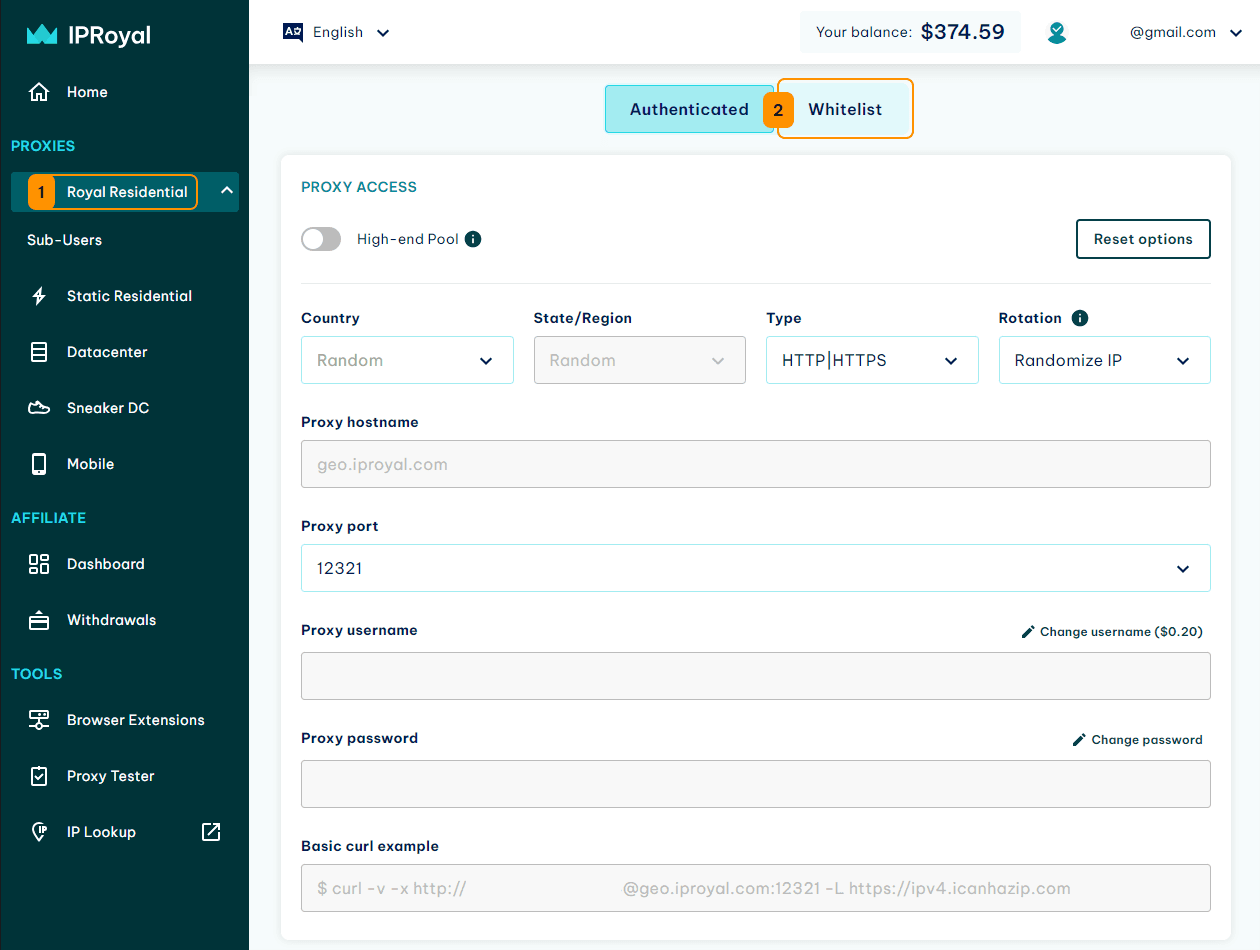
3. This will take you to the IP whitelist configuration page. Click the Add button (3) .
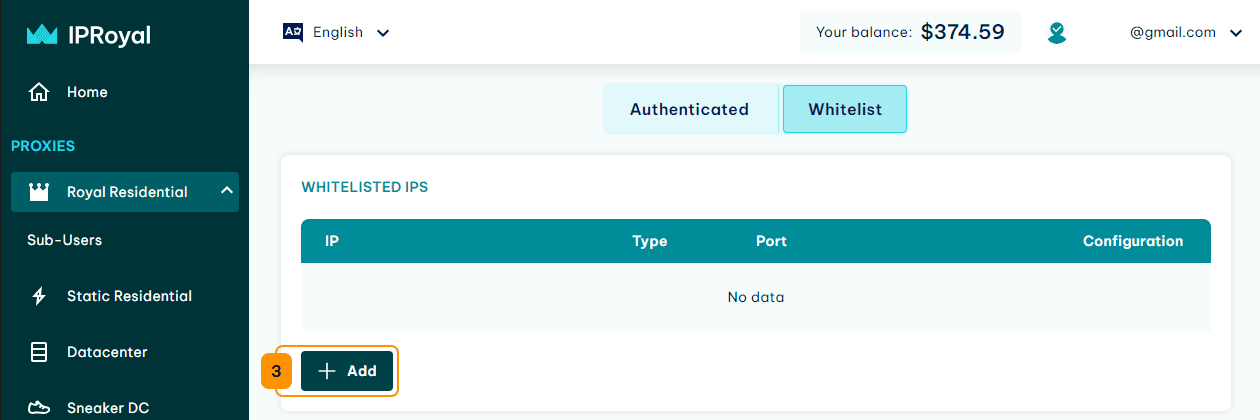
4. Use the Configuration section (4) to configure your proxies the same way you would if you used the standard username + password authentication. In the Options section, add the IP address you want to whitelist (5) . Once you’re done, click the Create button (6) .

5. You can add more IP addresses by repeating the steps 1 to 4. The whitelisted IPs can share configuration information, but you can also generate a unique configuration (including country, state, proxy type, and session type) for each IP address.
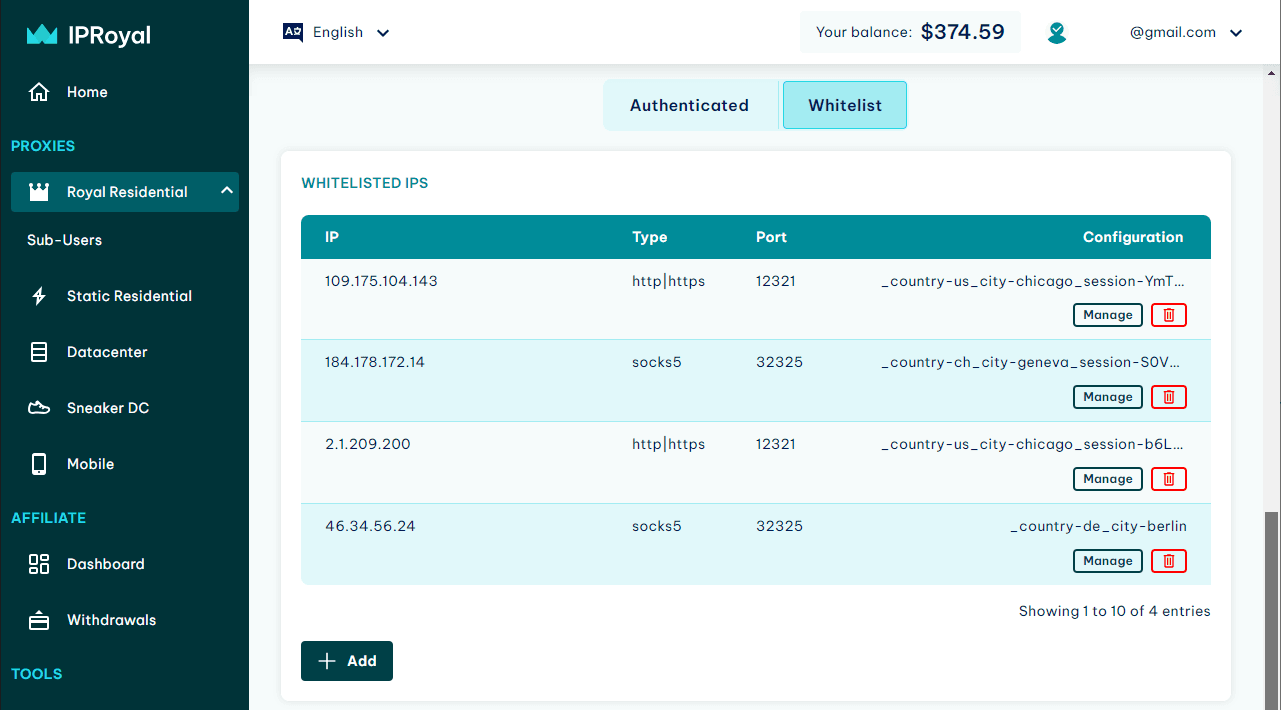
How to Use IPRoyal Proxies With Whitelisted IPs
To start using proxies with your whitelisted IPs, scroll down to the Formatted proxy list section (1) . Select the whitelisted IP from the Whitelist drop-down menu (2) and copy the IP:PORT information (3) .
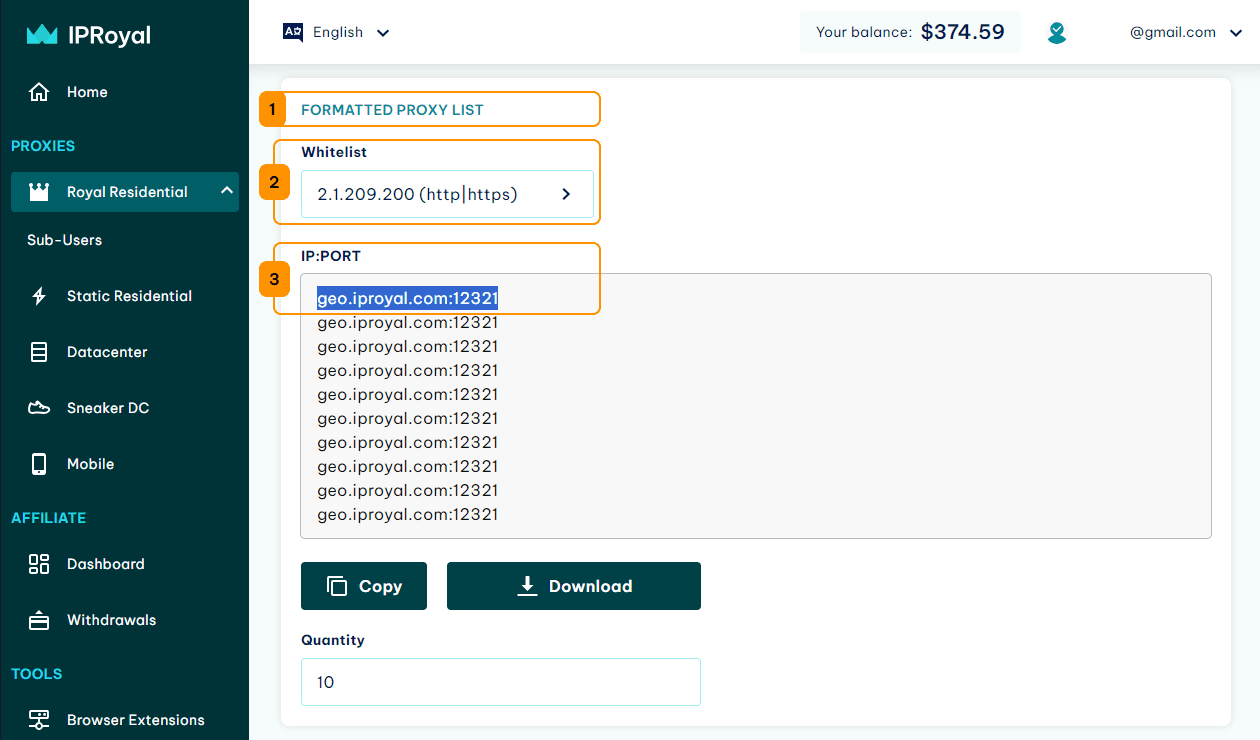
Add the IP and port information to your web scraper, anti-detect browser, proxy manager, or any other tool, and that’s it. All requests sent from that specific IP address will go through IPRoyal proxies according to your configuration settings.
We’ll use our proxy management browser extensions (available for Chrome and Firefox ) as an example.
1. After installing our extension, you need to configure it. Click the Get Started button (1) .
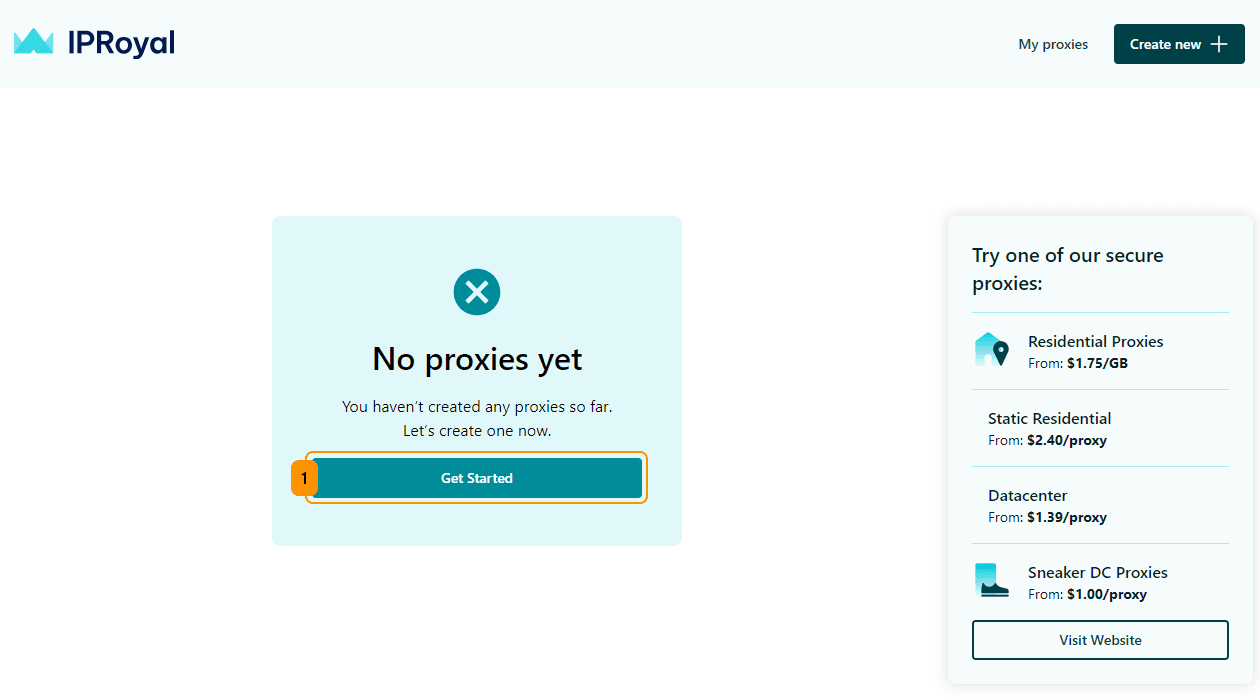
2. Select Single Proxy (2) and click Next (3) .

3. Switch from Authenticated to Whitelist (4) . Enter your profile name (5) and choose the correct proxy type (6) you set for the IP address. Add the IP (7) and Port (8) data you got from the IPRoyal dashboard. Once you’re done, click the Save button (9) .
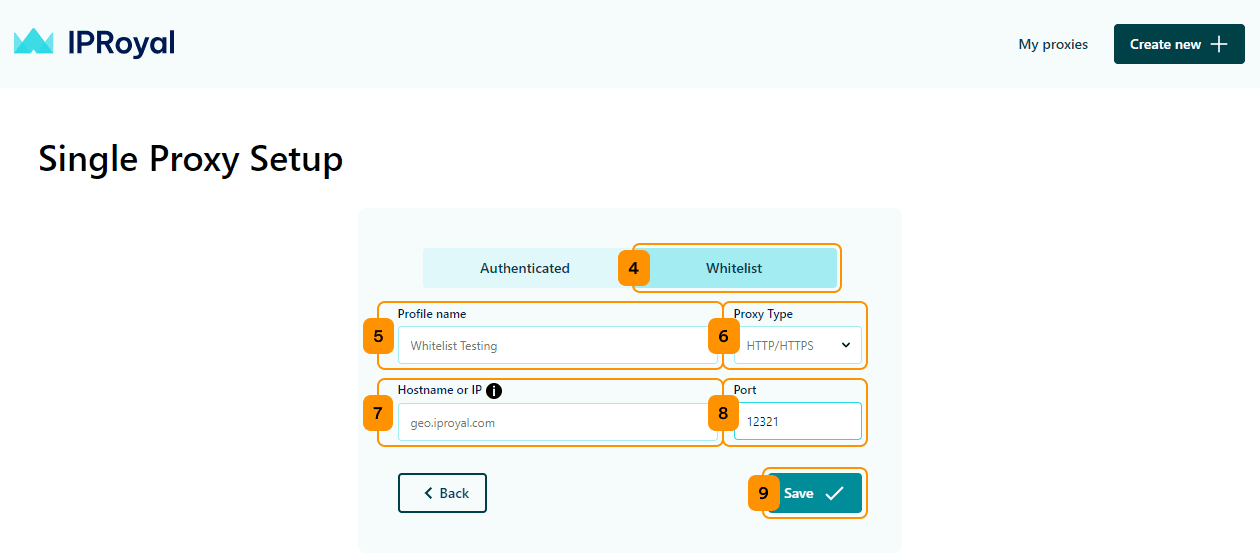
4. Click the IPRoyal extension icon in your browser and activate your newly created profile (10) .

5. Finally, you can visit our IP Lookup page again to verify your requests are sent via IPRoyal proxies.

If you want all requests sent from your device to go through proxies (without setting them up for specific browsers or other tools), you need to alter your operating system’s proxy settings. We’ll use Windows as an example. Find your proxy settings (1) , enable proxies, enter the IP and port information (or Address and Port in this case) (2) , and click Save (3) .

FAQ
What is the purpose of IP whitelisting?
IP whitelisting offers more control compared to other authentication methods. Unlike usernames and passwords, a device’s IP address is unique and can’t be shared. By using IP whitelisting, you can ensure that only authorized IPs can use your residential proxy traffic.
Do all whitelisted IPs share the proxy configuration settings?
No. You can use different proxy settings for each whitelisted IP address and change them as necessary. These settings include your proxy location, type, rotation options, and session duration.
Will I ever need to update the IP and Port information if I change my proxy settings?
That depends on the type of changes you make. If you decide to change the proxy country, region, or rotation options, you won’t need to update anything. Also, the IP (or hostname) is always the same - geo.iproyal.com.
The proxy protocols or types (HTTP|HTTPS and SOCKS5 ) use different port numbers, however. If you need to use different protocols, you can create two configurations for the same IP address and change the port as necessary.
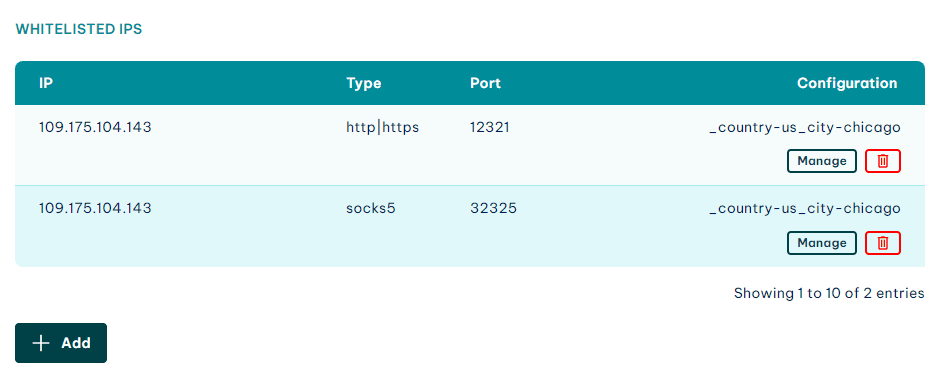
So, if you want to use HTTP|HTTPS for this IP address, the port number is 12321. If you want to switch to SOCKS5, you need to change the port number to 32325 in your configuration (browser extension, operating system settings, or any other tool).

Author
Simona Lamsodyte
Content Manager
Equally known for her brutal honesty and meticulous planning, Simona has established herself as a true professional with a keen eye for detail. Her experience in project management, social media, and SEO content marketing has helped her constantly deliver outstanding results across various projects. Simona is passionate about the intricacies of technology and cybersecurity, keeping a close eye on proxy advancements and collaborating with other businesses in the industry.
Learn more about Simona Lamsodyte


